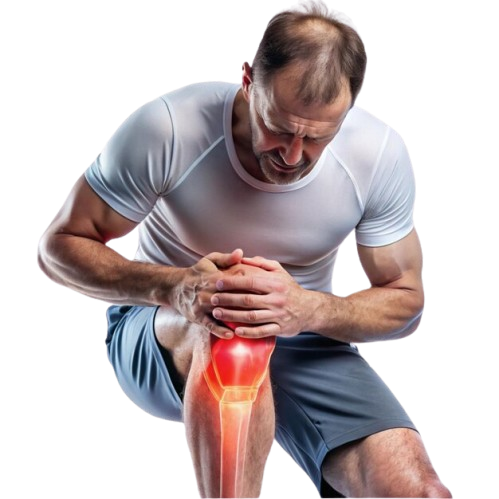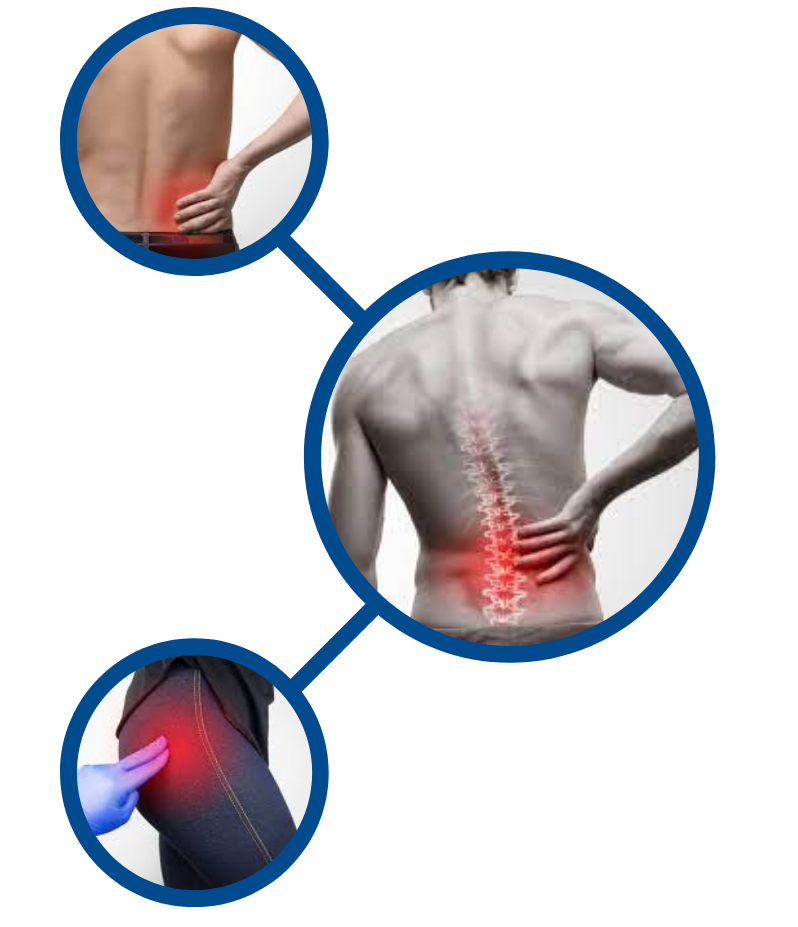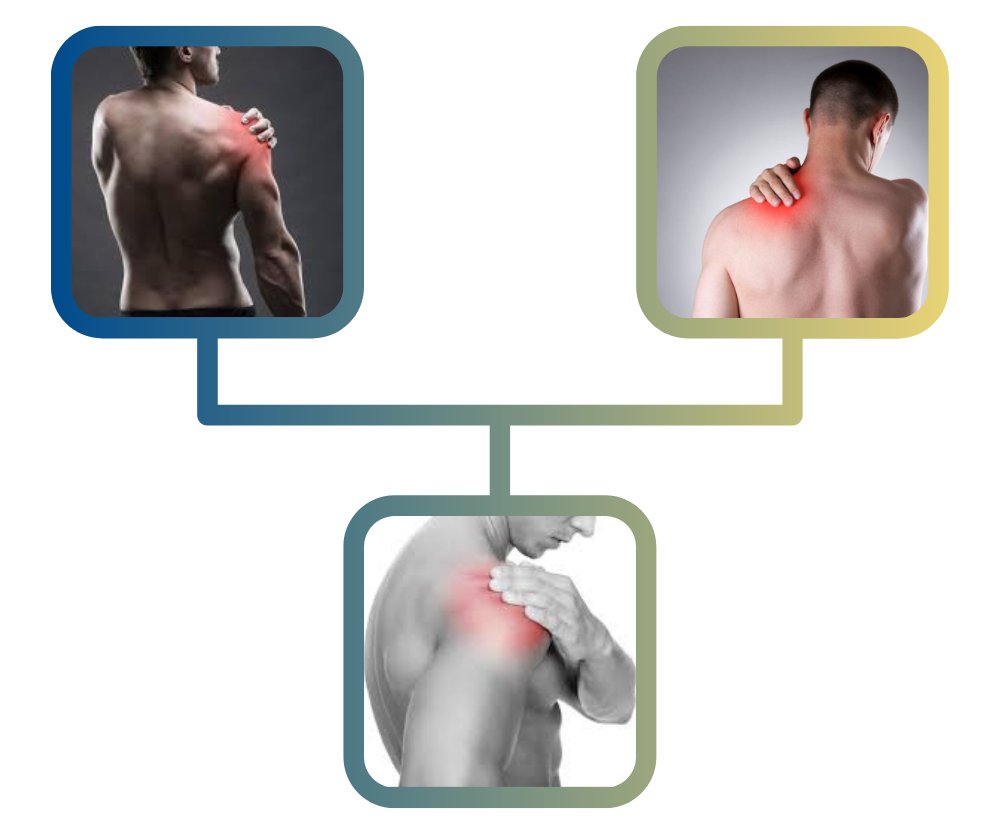- 216-417-3700
- Office Hours: Mon-Thu 7am-5pm

Arthritis of the hip is a common condition that is typically encountered in patients starting in their 50’s. Because it’s the largest joint in the body, the hip joint is susceptible to the development of several different types of arthritis, such as osteoarthritis, rheumatoid arthritis, and post-traumatic arthritis. Less frequent causes of hip pain include collagen vascular diseases, infection, and Lyme disease.
Hip pain is characterized by pain in the groin, upper thigh, or low back and is typically felt on the same side as the affected hip. Activities such as sleeping, walking, climbing stairs, and getting up from a seated position may be impaired and most movement will worsen the pain. Patients may notice a grating or popping sensation in the hip joint and decreased function as hip pain progresses.
A common test for hip joint pain is the FABER test, which includes flexion, abduction, external rotation, and extension of the hip joint. Diagnosis of hip pain usually starts with x-rays or an MRI. Treatment of hip pain typically starts with non-steroidal anti-inflammatory medications. Physical therapy and injection of steroids directly into the hip joint can also be used as diagnostic and therapeutic tools. Other physical modalities include rest, heat, and range of motion exercises. As a last resort, orthopedic surgeons can replace the hip with an artificial one. One must also realize that knee and low back conditions, tendonitis, muscles strains and sprains, and infections can refer pain to the hip, so these conditions must also be ruled out.


The shoulder is a complex joint that is susceptible to injury and arthritis (the most common being osteoarthritis). The usual sign of a problem is pain that is localized around the shoulder and upper arm and described as constant, deep, and aching. It may interfere with sleep and feel worse with any kind of activity. Reduced range of motion can lead to a gradual reduction in the functional ability which can make everyday tasks difficult and painful. Patients may also notice a popping sensation or grinding sensation in the shoulder joint.
There are many reasons that will cause pain in the shoulder joint. These include arthritis of the shoulder joint, acromioclavicular joint pain, subdeltoid bursa pain, bicipital tendonitis, adhesive capsulitis (frozen shoulder), bicep tears, supraspinatis syndrome, rotator cuff tear, deltoid syndrome, teres major syndrome, scapulocostal syndrome, and avascular necrosis of the glenohumeral joint.
Diagnostic workup can include tests such as x-rays, MRIs, and bone scans. Differential diagnoses include rheumatoid arthritis, post-traumatic arthritis, rotator cuff arthropathy, collagen vascular disease, infections, and Lyme disease.
Treatment may include nonsteroidal anti-inflammatory medications, application of heat and ice, physical therapy, and intrararticular injections of steroids.
Cleveland Pain Specialists
Providing compassionate, expert care for chronic and acute pain management. Your comfort is our priority.
© Copyright Cleveland Pain Specialists & Steven Kozmary, M.D. Privacy Policy | Terms & Conditions.
hip and shoulder joint pain, shoulder hip and knee pain, shoulder pain relief cleveland, knee hip and shoulder pain, shoulder and hip joint pain, knee pain relief cleveland, shoulder pain treatment cleveland
Joint pain is a common ailment that affects millions of individuals, often resulting from conditions such as arthritis, injuries, or wear and tear over time. Understanding the underlying causes of joint pain is crucial for effective management and treatment, as these conditions can vary significantly in severity and impact on daily life.
For instance, osteoarthritis is characterized by the degeneration of joint cartilage, leading to pain and stiffness, while rheumatoid arthritis is an autoimmune disorder that causes inflammation in the joints. Recognizing these differences helps patients seek appropriate care and tailor their treatment plans accordingly.
Knee, hip, and shoulder pain can stem from various conditions, each requiring distinct approaches to treatment. Common knee issues include meniscus tears and ligament injuries, while hip pain is often linked to bursitis and labral tears. Shoulder pain frequently arises from rotator cuff injuries or frozen shoulder syndrome.
Understanding these conditions not only aids in accurate diagnosis but also informs patients about the most effective treatment options available, such as physical therapy, corticosteroid injections, or surgical interventions when necessary. This knowledge empowers patients to engage actively in their pain management journey.
There are numerous treatment options available for managing joint pain, ranging from non-invasive therapies to surgical interventions. Common non-surgical treatments include physical therapy, medication, and lifestyle modifications, which can significantly alleviate symptoms and improve mobility.
In more severe cases, doctors may recommend procedures such as arthroscopy or joint replacement surgery. Each treatment plan should be tailored to the individual’s specific condition and lifestyle, ensuring the best possible outcomes for pain relief and functional improvement.
Recognizing when to seek professional help for joint pain is vital for effective management. Patients should consult a healthcare provider when experiencing persistent pain, swelling, or stiffness that interferes with daily activities or worsens over time.
Early intervention can lead to better outcomes, as healthcare professionals can provide accurate diagnoses and develop personalized treatment plans. Additionally, understanding the importance of professional evaluation helps patients avoid potential complications associated with untreated joint conditions.